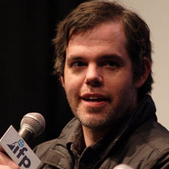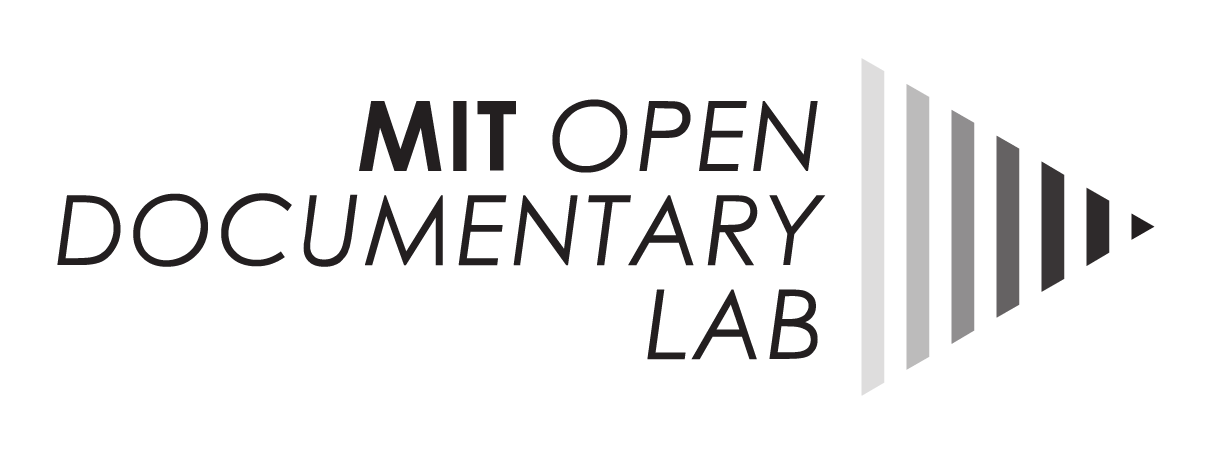
02 May The New Digital Storytelling Series: Lance Weiler
The MIT Open Documentary Lab teamed up with Filmmaker Magazine on The New Digital Storytelling Series, a group of interviews with leading digital storytellers, technologists and curators. This interview was previously published on FilmmakerMagazine.com and is reposted with permission.
In the ninth part of Filmmaker‘s interview project with prominent figures from the world of transmedia, conducted through the MIT Open Documentary Lab, Lance Weiler answers our questions. Weiler is a boundary-pushing transmedia storyteller who has, among many notable achievements, directed and self-distributed innovative movies (The Last Broadcast, Head Trauma), created an ARG for Head Trauma, made the immersive storytelling short Pandemic, and founded the regular creative conference diy days and the transmedia company Reboot Stories. He also writes the Culture Hacker column for Filmmaker magazine, and is on the board of the IFP, the publisher of Filmmaker.
For an introduction to this entire series, and links to all the installments so far, check out “Should Filmmakers Learn to Code,” by MIT Open Documentary Lab’s Sarah Wolozin.
MIT Open Documentary Lab: How did you become a digital storyteller? Were there any projects that inspired you? If not, where did you look for inspiration?
Weiler: I feel as if I’m storytelling agnostic. It is not platform specific. I see it as storytelling. I’m trying to find some type of an emotional core for the work. Can I help the viewer / player to feel something? Can I help them to connect with the characters and story? I’ll often develop projects that mix analog and digital elements. Projects that spill beyond the screen and into the real world and back. The inspiration for the projects can come from anywhere. Similar to when I write for film and TV, the inspiration can come from a place, a feeling, a character, a situation or something that I see or feel in the real world. Lately, I’ve be inspired by things that I feel are challenging or at the onset seem impossible.
MIT Open Documentary Lab: What are the most useful skills for an interactive storyteller? What are the tools of the trade?
Weiler: Being able to understand the balance between story and technology is something that is a valuable skill. Development cycles for stories and technology are very different. Even if you attempt to work with an agile method of development you’re still going to hit up against the limitations of the process. So being able to communicate your creative vision in a way that can bridge silos is critical. Every time out is different. Each project is its own mountain to climb. The tools of the trade shift from project to project but what I find myself using often are a lot of design thinking principles.
MIT Open Documentary Lab: When you start an interactive project, how do you put together a team?
Weiler: Often I’ll start projects by testing them in the real world. I’m a big fan of failing quickly and learning from it. Just doing it to see if it works, how people respond and where it breaks. When I teach my course on immersive storytelling at Columbia University I’ll purposely bring a broken experience into the classroom. I’ll let the students ideate around it quickly. Together the students always build something that is so much stronger. I’m often surprised by how quickly they can get the story, game or interactivity to an interesting level. Rapid prototyping is an important part of my development process. By paper testing and analog prototyping I often find that it helps to inform the design and user experience (UX) of the technology that we’re building. My core team of collaborators consists of data scientists, researchers, creative technologists, UX designers, game designers and strategists. This is in addition to my producer, production designer and d.p. who I regularly work with.
MIT Open Documentary Lab: Where is this community and how can people access it?
Weiler: In terms of a community of practitioners there are a number of transmedia meetup groups that gather in most major cities. StoryCode is a great resource and they are expanding beyond NYC in 2013. The IFP’s new Media Centerwill be an interesting collaborative space when it launches later this year. In 2008, I started a roving gathering for creatives interested in 21st century storytelling called diy days. In the last five years we’ve staged 13 events all over the world. diy days is a special event in the sense that it is a social sandbox where storytellers can test projects and designs with a live audience. Some amazing projects have been incubated out of diy days. In 2011, Caine’s Arcade got its start at our diy days LA event and most recently My Sky is Falling, an immersive experience about aging out of foster care, was staged at our annual NYC event. In 2013, diy days travels to Gothenburg, NYC, Toronto, Paris, Istanbul, Ghent and L.A.
MIT Open Documentary Lab: How does the role of a director change? What are the creative challenges?
Weiler: It is truly an amazing time to be a storyteller. The directors of the 21st century will be experience designers and story architects. The demand for creatives who have a command of storytelling, technology and experience design is growing across industries. For instance, this year I’ve worked with media, publishing, gaming, festivals, technology companies and brands — all of which are experimenting with new ways to tell stories and reach audiences. The largest creative challenges at this point are the fragmentation of the landscape and lack of infrastructure to fluidly deliver experiences to audiences.
MIT Open Documentary Lab: How does the role of the audience change?
Weiler: Those formerly known as the audience are becoming collaborators. All the projects that I’m working on are leaving room for the audience to become collaborators. The days of expecting an audience to just pay and not participate are over. The audience feels that they are storytellers. For those willing to let go and experiment there are some interesting new business models that can emerge which help the audience to become better storytellers.
MIT Open Documentary Lab: What’s your level of understanding of coding or programming? Do you see the relationship of director and creative technologist as analogous to director and cinematographer? (Why or why not?)
Weiler: I have a solid understanding of coding. I know how long things take, I understand backend systems and how to scale projects. But most importantly I respect the role of technology within the projects that I do. I’ll spend a lot of time considering the “why” prior to jumping into the “how.” To me a creative technologist is analogous to a cinematographer, production designer and editor rolled into one. They can make or break a project and a good creative technologist with a sense of storytelling is a critical team member to anyone that’s attempting to tell immersive stories.
MIT Open Documentary Lab: How do you find funding for digital interactive storytelling projects?
Weiler: Every project is different. Some are crowdfunded, some funded by private equity, some are granted while others make use of brand underwriting or tap traditional media funding methods. In addition I’m experimenting with some new revenue generating models. In the past I’ve developed technology to meet storytelling needs due to a lack of the infrastructure. In most cases I’ve been able to take that core technology and license it to other parties and industries.
MIT Open Documentary Lab: What’s your idea of the new model of distribution?
Weiler: A model of collaborative ownership that radically challenges how IP is valued and shared. A model that strives to establish a level of creative sustainability by leveraging efficiencies and inefficiencies within the market place. But most importantly a model that encourages and rewards risk and innovation.
MIT Open Documentary Lab: What’s your vision for how to exhibit interactive projects?
Weiler: Data sits at the center of the experience and provides a connective tissue that enables stories to be pervasive across devices. Not only will the data help to bridge the experience it will enable discovery, personalization and re-playability. A data layer is a critical step towards being able to archive immersive storyworlds especially in the current environment where analog is still a better archival method.
MIT Open Documentary Lab: Where do you see the future of this field going?
Weiler: I’m excited that the tools to create and distribute have been democratized and are now quickly becoming commoditized. I hope that the focus can turn to the storytelling. That creatives will focus their attention on how to best make the stories they’re telling emotionally relevant. Meanwhile, I believe that those formerly known as the audience will become meaningful collaborators across the production and distribution process. At the same time I think immersive storytelling will become a natural part of the creative process. It will move beyond a novelty and escape the shadow of marketing and promotion.




